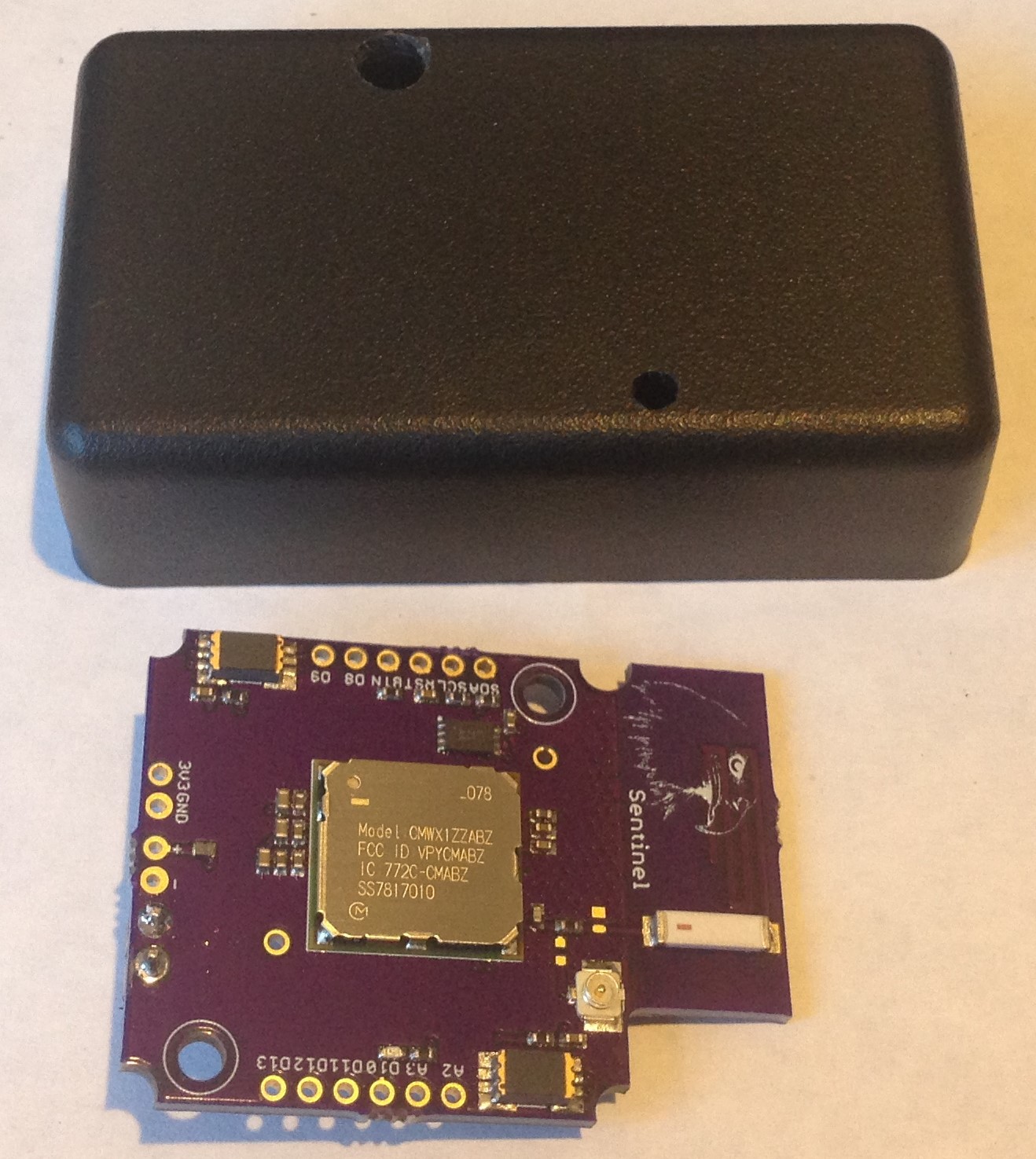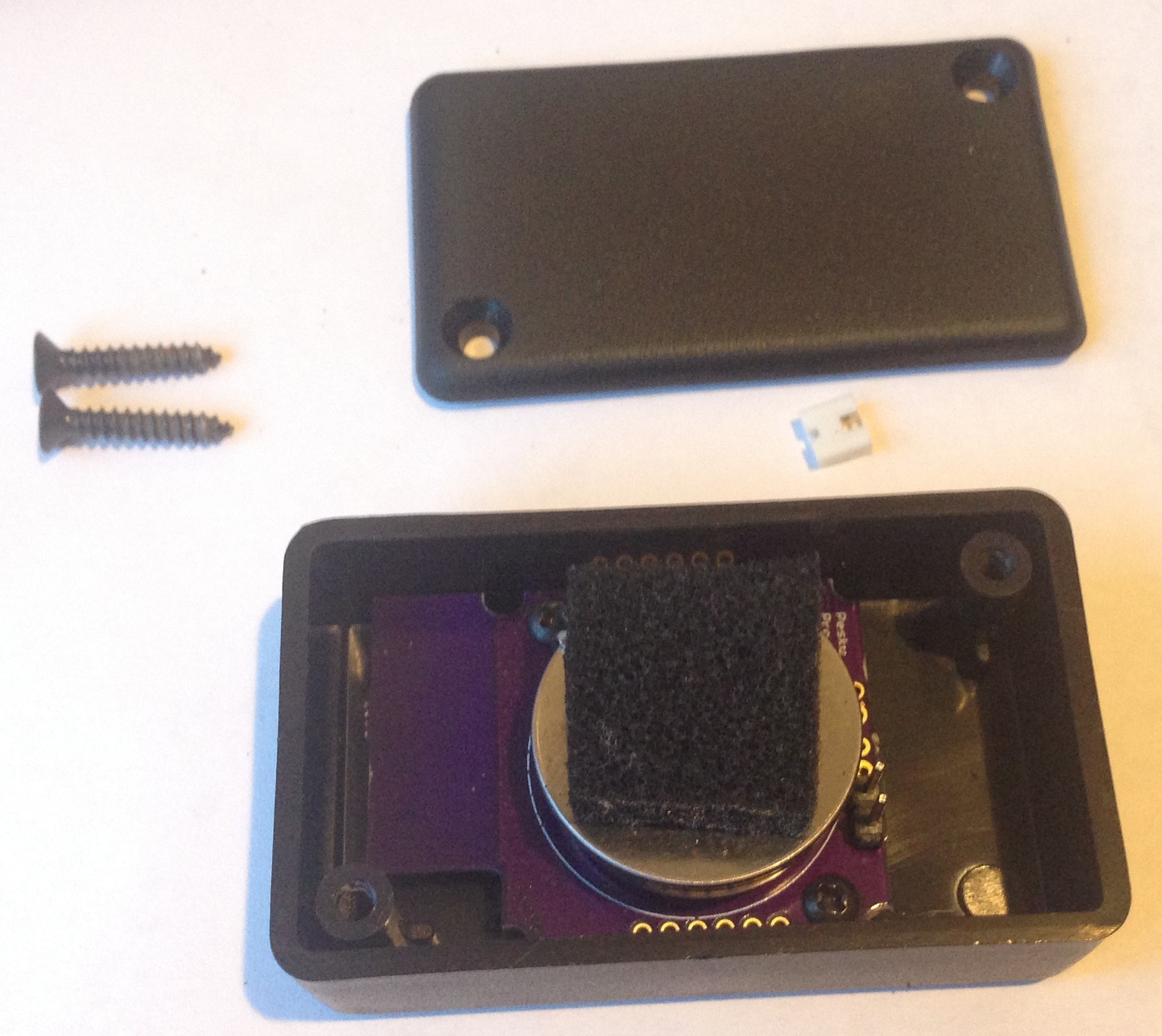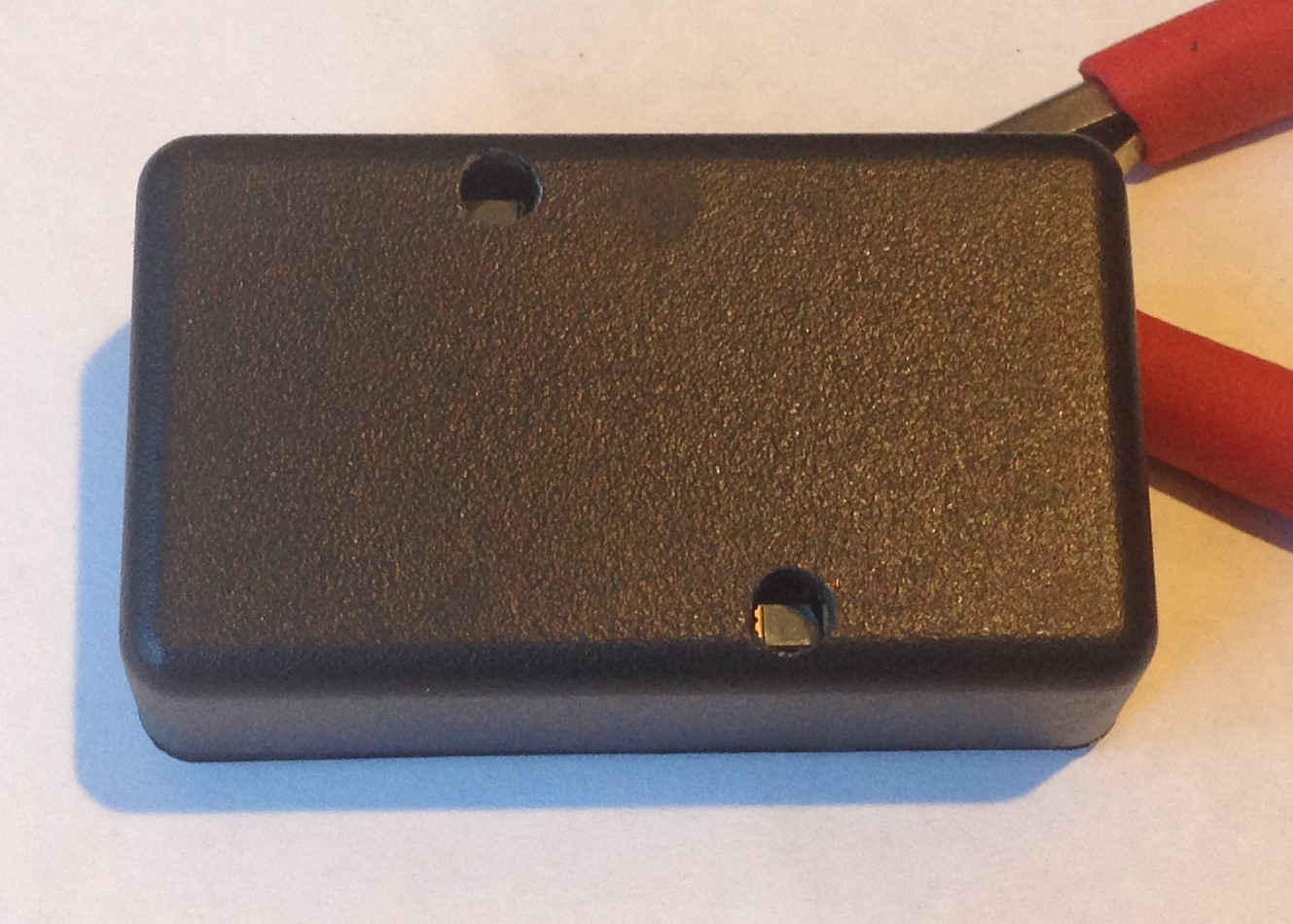23 March 2019
Having fixed the hole placement by redesign I assembled the new pcbs I received from OSH Park and tested the performance using the existing program that worked so well on the first test. Plug and play, I hoped....

The first thing I tried was relatively small holes for the thermopile sensors (bottom case side) but I didn't record any entries or exits on the first few passes so I enlarged the hole sizes to match what I used on the previous test (top case side).

I am using the same coin cell battery plus jumper for power but now a chip antenna instead of the copper monopole. I noticed a significant degradation in the RSSI signal with the board mounted in the case and the battery sitting on top of the board. I think this huge hunk of steel right next to the antenna stay out zone is costing me range. I might have to return to the monopole which seemed to work pretty well, which would also save some cost.
I like this smaller Hammond container:

It's about half the size of the Bud box. But while the Bud box can accommodate two AA or two AAA batteries plus holder the smaller Hammond box can only be powered by the 950 mAH coin cell battery.
How did it work?
Plug and play...Not! Even with the larger holes I often missed completely one or two out of the five passes back and forth that I used as a test run. Occasionally, I would register two ingresses when one each ingress and egress should have been measured. There is something different between this assembly and the previous design even though placement of the Type ABZ module and Calipile sensors on the pcb is identical. The mounting, container and holes are different (even though the same diameter) resulting in a difference in the field of view that must matter. One possibility is that my criterion for signal correlation is too strict, which works on one design but not another. What this means is I need to go back to diagnosing in detail what is happening with this particular device and see if I can get it to work well.
It would be fine if I needed two sets of criteria one specific to each container. better if I could find settings that worked well for both.
It is not surprising to see such sensitivity to externals like packaging especially with optical (or IR anyway) devices. I would have been surprised (although happy) if this device had worked at the same 100% accuracy of the first one. Beginner's luck I guess...
 Kris Winer
Kris Winer
Discussions
Become a Hackaday.io Member
Create an account to leave a comment. Already have an account? Log In.